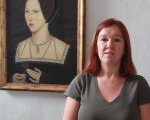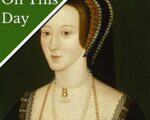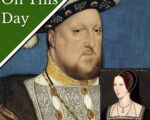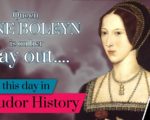Thank you to Tudor Life magazine contributor Kyra Kramer for this excellent article on Sir Henry Norris, Henry VIII’s Groom of the Stool, and the fall of Anne Boleyn. Over to Kyra…
Of all the men who were falsely accused of being Anne Boleyn’s companions in adultery, to point a finger at Henry Norris makes the most sense in terms of proximity and politics but the least sense in terms of his close relationship with Henry VIII.
If historian Greg Walker is correct in his 2002 proposal that Anne’s downfall was not due to her miscarriage of a male foetus in January of 1536 but instead to some hasty words she said in spring, then Norris was a ready-made target. One day in late April, the queen asked Henry Norris, who was the king’s groom of the stool and engaged to her cousin Madge Shelton, when he planned to wed. Norris hedged that he would wait just a bit longer, which vexed Anne. In her anger she told him he was looking for “dead men’s shoes, for if ought came to the king but good, you would look to have me”. This was a major blunder. It was treason to even think about the death of the king, let alone to talk about whom his queen might marry after his demise. Norris was appalled and Anne knew almost immediately that she had said something dangerous. She sent Norris to her chaplain, John Skyp, to swear that she was a good woman and faithful to the king.
[Read More...]








